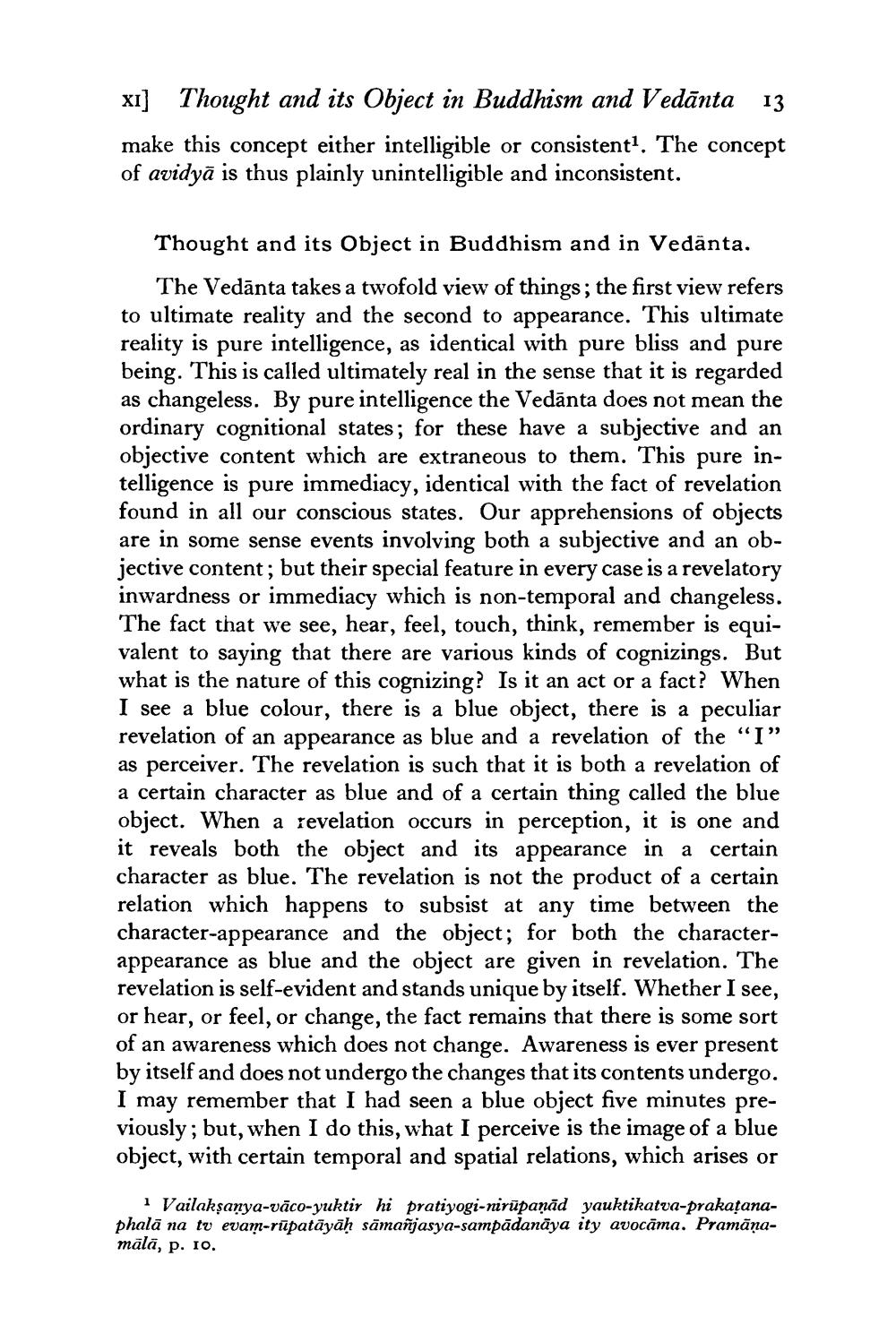________________
XI] Thought and its Object in Buddhism and Vedanta 13
make this concept either intelligible or consistent1. The concept of avidya is thus plainly unintelligible and inconsistent.
Thought and its Object in Buddhism and in Vedanta.
The Vedanta takes a twofold view of things; the first view refers to ultimate reality and the second to appearance. This ultimate reality is pure intelligence, as identical with pure bliss and pure being. This is called ultimately real in the sense that it is regarded as changeless. By pure intelligence the Vedanta does not mean the ordinary cognitional states; for these have a subjective and an objective content which are extraneous to them. This pure intelligence is pure immediacy, identical with the fact of revelation found in all our conscious states. Our apprehensions of objects are in some sense events involving both a subjective and an objective content; but their special feature in every case is a revelatory inwardness or immediacy which is non-temporal and changeless. The fact that we see, hear, feel, touch, think, remember is equivalent to saying that there are various kinds of cognizings. But what is the nature of this cognizing? Is it an act or a fact? When I see a blue colour, there is a blue object, there is a peculiar revelation of an appearance as blue and a revelation of the "I" as perceiver. The revelation is such that it is both a revelation of a certain character as blue and of a certain thing called the blue object. When a revelation occurs in perception, it is one and it reveals both the object and its appearance in a certain character as blue. The revelation is not the product of a certain relation which happens to subsist at any time between the character-appearance and the object; for both the characterappearance as blue and the object are given in revelation. The revelation is self-evident and stands unique by itself. Whether I see, or hear, or feel, or change, the fact remains that there is some sort of an awareness which does not change. Awareness is ever present by itself and does not undergo the changes that its contents undergo. I may remember that I had seen a blue object five minutes previously; but, when I do this, what I perceive is the image of a blue object, with certain temporal and spatial relations, which arises or
1 Vailakṣanya-vāco-yuktir hi pratiyogi-nirupaṇād yauktikatva-prakaṭanaphala na tv evam-rūpatāyāḥ sāmañjasya-sampādanāya ity avocāma. Pramāṇamālā, p. 10.




